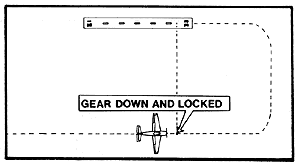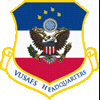I tried to find a thread that would explain, in detail, how to properly a standard approach into an airport, but it seems that the topics are buried within each other and because there are so many different approaches (varying for each aircraft), I figured I would help some people out.
__________________________________________________________________________________________________
This article is directed at the novice pilot or anyone who wants to get a touch of realism and get the general gist of proper traffic pattern procedures.
First off, what is the traffic pattern?
The traffic pattern is the directional flow of aircraft around an airport for approach purposes. The traffic pattern is typically used for only smaller airports that can be either controlled by ATC or operated as a non-controlled facility.
The traffic pattern at an airport is typically flown 1,000 feet above the surface of the airfield. So, for an airport that is 531 feet above sea level, the traffic pattern would be 1500 feet MSL. Keep in mind, this altitude may change, depending on the specified information for the particular airport you are flying to. You should always check an Airport/Facility Directory (AFD) prior to departure to see what features and procedures that airport operates with. If you don't have an AFD, feel free to use AirNav.com in the United States.
The traffic pattern generally flows in a left-hand rectangle around the airport, but some airports may use right-hand procedures if there are any major traffic operations nearby or obstacles that may obstruct the flow of the traffic pattern if it were to be left-handed. ATC may also designate which direction you will fly the pattern, however, Flight Simulator does not operate that detailed, so just know your general pattern direction prior to departure (also available in the AFD).
There are five major components to the standard traffic pattern, plus a few extra terms you will use. They are:
Upwind
Crosswind
Downwind
Base
Final
Upwind is the leg of the traffic pattern that flows into the wind, parallel with the runway. If you have a quartering crosswind breeze on takeoff, Upwind is still called "upwind" and with still be flown parallel to the runway. When taking off, Upwind is often referred to as the Departure Leg.
After takeoff, you would make a 90-degree turn to the Crosswind Leg. The Crosswind Leg is perpendicular to the runway and connect the Upwind Leg and upcoming Downwind Leg, allowing you to gain altitude while clearing yourself from the runway departure area.
The third leg you will fly is the Downwind Leg. The Downwind Leg is the most crucial leg of the traffic pattern, where you will make all of your final preparations before landing. Here, you will check your fuel sources, your airspeed, your landing gear, and other crucial landing components. The Downwind Leg is also the standard entry point into the traffic pattern if you are arriving from a different airport. You generally fly into the Downwind Leg at the corner of Downwind and Crosswind, entering on a 45-degree angle from the Downwind turn. This allows you to see all of the traffic in the pattern, and makes for a smooth transition into your Downwind turn. The end of the Downwind Leg is also where you begin your descent into the airport.
Your Base Leg is flown in a descent to the airfield, flying perpendicular to the Downwind Leg, preparing yourself for your final approach. On Base, the key procedure to practice is checking to see that there is nobody on final approach before you make your final turn for the runway.
Following the Base Leg will be the Final Approach Leg. This is where you are lined up with the runway, making your final descent into the airfield.
This diagram shows the standard traffic pattern set up for general aviation aircraft.

__________________________________________________________________________________________________
Practical Exercise:
Now that you have read up on the the basics of the traffic pattern, it's time to get you to practice your landings using the traffic pattern. For this scenario, we'll use the Cessna 172 as our aircraft. Our airport will be Lost Nation Municipal Airport (KLNN), in Willoughby, Ohio, USA. I have chosen this airport since I have flown out of it many times and uses the standard traffic pattern, making it perfect for flight training.
The airport sits at 626 feet above sea level, so we'll round it off to 600 and add 1,000 feet to get our traffic pattern altitude of 1,600 feet. The airport has two sets of runways, 10-28 and 5-23. We'll use Runway 5 for this scenario.
Here are the steps to execute a proper takeoff and landing through the traffic pattern in the Cessna 172:
-Line up on the runway. Ensure flaps up. Apply full power and accelerate to 60 knots. At 60 knots, slowly rotate off the ground climb straight out to 1,600 feet MSL. You'll want to climb at approximately 80 knots.
-When you are 300 feet below pattern altitude (1300 feet in this case), make a 90-degree left-hand turn onto your Crosswind Leg. Continue climbing to 1,600 feet as you turn at 80 knots. You will hold 80 knots until further instructed.
-Once on your Crosswind Leg, facing 90-degrees from the runway (in this case, heading 320), count for about 5 to 10 seconds. This will give you the proper spacing before turning onto your Downwind Leg. The best way to see visually that you have the proper spacing is by keeping the runway about halfway up the wing strut as you look out your window at it.
-After counting between 5 and 10 seconds, make another 90-degree left-hand turn onto your Downwind Leg. You should be flying parallel to the runway in the opposite direction that you will be landing. Maintain 80 knots (typically between 2000 and 2100 RPM) and hold 1600 feet. At this time, check to ensure that your mixture is fully enriched, both of your magnetos are on, your battery is turned on, your fuel is set to both tanks, and that everything is in order in the cockpit prior to landing.
-When you are abeam the runway number marking (the location you will touchdown at), decreased power to 1500-1700 RPM and decelerate. Put in 10 degrees of flaps, hold at 1600 feet, and maintain 65 knots of airspeed. Once at 65 knots, start a gradual descent down.
-When you are on a 45-degree angle from where you will be touching down, make a 90-degree left-hand turn to your Base Leg. Do not turn Base unless you are at least 200 feet below pattern altitude to prevent from coming in too high. Set flaps to 20 degrees and continue your decent down, maintaining 65 knots. Make sure the final approach path is clear. The biggest thing to remember is not to pull back during your turn to Base. This is a natural tendency for turning at a level altitude, but by putting pressure on the yoke, you will bleed off too much airspeed and may stall during your turn.
-By judging the proper timing, start your turn to Final. Line yourself up with the runway. If you over shoot, try to gradually correct yourself back on line with the runway. If you are too far off, just go around and try again on your next approach. Continue descending at 65 knots, and once you are sure that you will make the runway in the event of an engine failure, put in full flaps, and idle the throttle. Descending at the right rate and holding 65 knots will set you up for a perfect landing.
-As you approach the touchdown point, start to level off several feet above the runway and allow the excess airspeed to bleed off. As you feel the aircraft losing its flight capability, slowly round out to a slightly nose-high attitude, flaring the aircraft so it can land on its main gear. Doing this will ensure a gentle touch down.
-Apply brakes as needed. If you wish to go around, put the flaps up and apply full power and repeat this process.
Note:
Use 60 knots and full flaps for short-field and soft-field approach procedures. Leave other aspects of the traffic pattern flight the same. In the event of high-/gusting crosswinds, less flaps may be used.
It takes a good pattern and approach procedure to execute a good landing. Practice makes perfect.
Key things to practice:
-In uncontrolled traffic environments, call out all of your turns to each leg as to avoid a traffic mishap. In ATC environments, position callouts are not required, and listen for any deviations that may be instructed to you.
-If the airport you are flying to has an approach slope indicator (VASI, PAPI, etc.), use this for a glide slope reference. May sure you are not too low on your approach in case of obstacles.
-Always look for other traffic, and do not rush your flight in the traffic pattern to land before somebody else arrives or takes off. Keeping a steady flow, well practiced, will allow you to execute a near perfect landing every time.
-Keep in mind that different weather causes different approaches. You may need to correct your flight characteristics if wind is blowing you too far away or too close to the runway while in the pattern. Adjust your power and attitude as necessary, but try to stay as close to standard procedures as possible.
-Different aircraft have different approach speeds and procedures. It is best to review your aircraft Operating Manual and Checklists prior to flying it.
-Be familiar with where you are going before you get there. Research the proper airport information and approach procedures that will become handy to you when it comes time for your arrival. Check the forecasted weather conditions for your destination to see if there may be any difficulties when you approach your airport.
-Look outside the aircraft. Instruments are helpful, but they don't let you know about the other aircraft you're flying into.



















